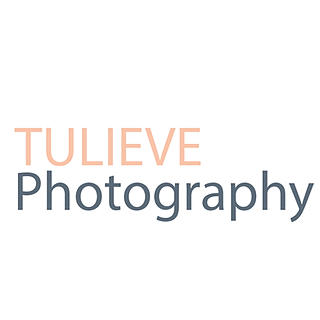How to Choose the Best Website Builder for Your Photography Portfolio: Top 3 Options Unveiled!
- Tulieve Photography
- Feb 11
- 3 min read
In today's digital world, having a professional online portfolio is essential for photographers aiming to attract clients. A website can be your best marketing tool, showcasing your work and personality. With numerous options available, picking the right website builder can define your online image—drawing in more visitors and increasing bookings. Let’s explore three top website builders tailored for photographers and see how they can elevate your portfolio.
The Importance of a Website Builder
Having a website is crucial for establishing your brand identity. A well-designed site not only highlights your best work but also serves as a direct connection point for potential clients. Did you know that 30% of customers consider a website’s design a key factor in deciding whether to trust a business? With a website, you control the layout, colors, and functionalities that showcase your photographs beautifully. Additionally, a website helps you stand out in a crowded market where first impressions matter immensely.
1. Wix: The Versatile Creator
Overview
Wix is often praised as a top choice for photographers, and for good reason. Its user-friendly drag-and-drop interface allows you to build an eye-catching portfolio quickly.
Features
Templates: Wix boasts over 500 stunning templates designed for photographers. Each can be customized, ensuring your portfolio stands out with your unique style.
SEO Tools: Wix includes robust built-in SEO features, such as customizable URLs and include meta tags, enhancing your site’s chances of appearing in search results. Sites using SEO effectively can see a traffic increase of up to 14 times.
Mobile Optimization: All Wix templates are mobile-friendly, making your portfolio look great on phones and tablets, ensuring you reach clients on any device.
Drawbacks
While Wix is straightforward, some users may require a bit of time to master advanced features, particularly in customizing complex elements.

2. Squarespace: The Elegant Choice
Overview
For photographers aiming for aesthetic appeal, Squarespace delivers. Known for its sleek, sophisticated templates, it's a favorite among creative professionals.
Features
Design Quality: Squarespace offers over 100 beautiful, designer-quality templates that photographers love for their elegant and minimalistic features. These templates can lead to higher viewer engagement, as modern design increases perceived credibility.
Built-in Blogging: This platform makes it easy to integrate a blog, allowing you to share behind-the-scenes stories from shoots or photography tips, a great way to connect with your audience and enhance SEO.
E-commerce Capabilities: If selling prints is part of your business model, Squarespace provides built-in e-commerce features that support various payment methods, making transactions seamless.
Drawbacks
Though customizable, some users report that Squarespace has a steeper learning curve compared to others, which may require extra effort to master.

3. Pixpa: The Robust Option
Overview
Pixpa is a fantastic choice for photographers who want a straightforward yet powerful platform for their portfolios. It balances simplicity with a range of features.
Features
Customizable Galleries: Pixpa offers various gallery styles that can be tailored to fit your work, making it easy for visitors to browse your photography. Tests show that quality photos displayed well can increase engagement by up to 50%.
Client Proofing: This feature is invaluable for professional photographers, allowing clients to select images directly from galleries.
Integrated Marketing Tools: Pixpa includes essential marketing tools, helping with email campaigns and client management, making it easier to keep in touch with past clients and build lasting relationships.
Drawbacks
While it has solid features, some users might find it less flexible than competitors, as it is specifically targeted towards photographers.

Finding Your Perfect Fit
With these three platforms in mind, how do you choose the right one for you?
Assess Your Needs
Identify what you want from your website. If blogging is a priority, Squarespace could be your best choice. If print sales are key to your business, Pixpa’s e-commerce features might serve you well.
Experiment Before Committing
Many website builders offer free trials. Take advantage of these opportunities to explore their features. Find which platform feels most comfortable for you.
Reflect on Your Brand
Your website should mirror your creative style and the type of photography you focus on. Choose a builder that lets your vision come alive.
Final Thoughts
Creating an online portfolio is vital for photographers, particularly those starting their careers. Choosing the right website builder can effectively showcase your work while attracting potential clients.
Wix, Squarespace, and Pixpa each offer unique benefits that cater to different photography needs. Explore their features carefully and find the one that best fits your creative journey.
Remember, your website is often the first chance you have to impress clients; make it visually stunning and reflective of your talent!


Comments